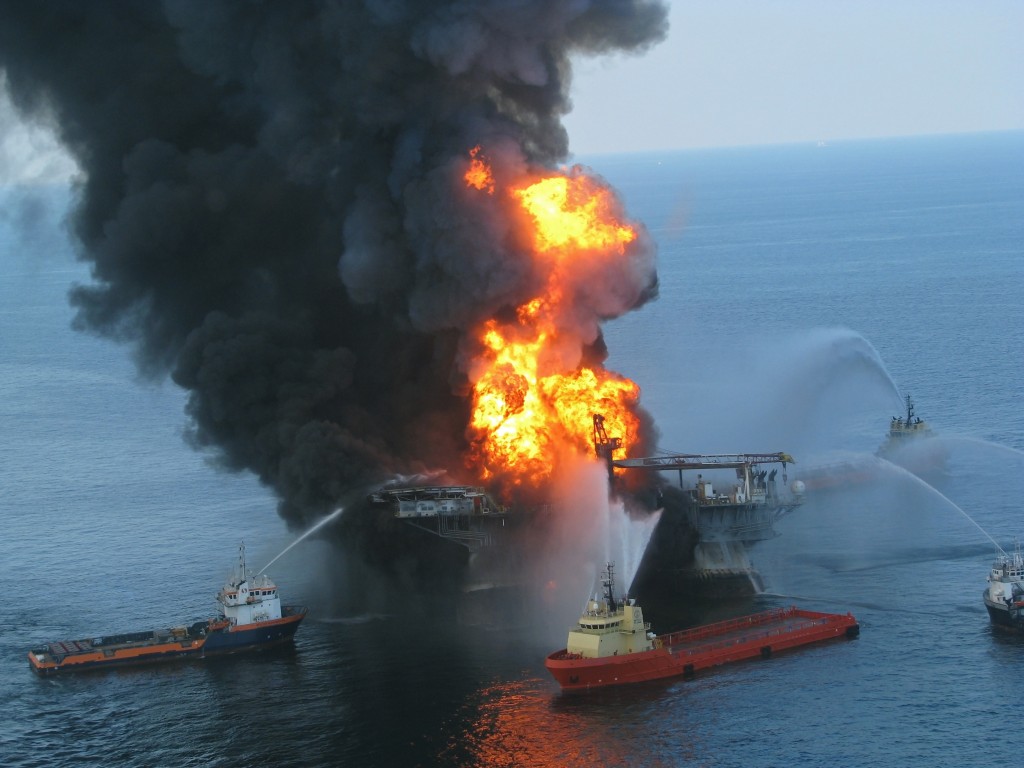The Deepwater Horizon oil spill, a BP project in the Gulf of Mexico, began in April of 2010. The oil rig collapsed and it took some three months to cap the gusher. During that, concern was also on how to clean up the over four million barrels of oil in the environment
Among other approaches, the government used the Corexit oil dispersant, which emulsifies oil into balls and microbes, such as the genetically modified marine bacterium Alcanivorax borkumensis and the Colwellia species of bacteria, to consume it. And it worked, but a new paper says some of the more toxic components still remain.

Deepwater Horizon fire. Credit: Bennington.edu
In two new studies conducted in a deep sea plume, researchers found that Colwellia likely consumed gaseous hydrocarbons and perhaps benzene, toluene, ethylbenzene and xylene compounds that were released as part of the oil spill but toxic parts of the oil spill in the water column plume and the oil that settled on the seafloor remain. The toxic contaminants are called polycyclic aromatic hydrocarbons or PAHs, a group of semi-volatile organic compounds that are present in crude oil and are linked to long-term health problems, including cancer.
The scientists investigated the oil deposits on 64 sediment samples in different areas around the oil wellhead. To understand the functional capacity of the microorganisms to degrade oil, microbial DNA was sequenced in 14 of those samples. Of those 14, seven of the samples exceeded the U.S. Environmental Protection Agency's water quality benchmarks for aquatic life due to PAHs.
"Those PAHs could persist for a long time, particularly if they are buried in the ocean floor where lack of oxygen would slow PAH degradation by microorganisms," said Florida State University Assistant Professor Olivia Mason, a biological oceanographer. "They're going to persist in the environment and have deleterious effects on whatever is living in the sediment."
Four years after the Deepwater Horizon spill occurred, it's still unclear how many barrels of oil spilled into the Gulf of Mexico and if that oil has been accounted for, which means it could be having unknown environmental consequences for the region.
Citation: Olivia U. Mason, James Han, Tanja Woyke, Janet K. Jansson, 'Single-cell genomics reveals features of a Colwellia species that was dominant during the Deepwater Horizon oil spill', Front. Microbiol., 07 July 2014 doi: 10.3389/fmicb.2014.00332. Source: Florida State University





Comments